Clinical Services: Surgical
This page is an accessible HTML version of the PDF shown below.
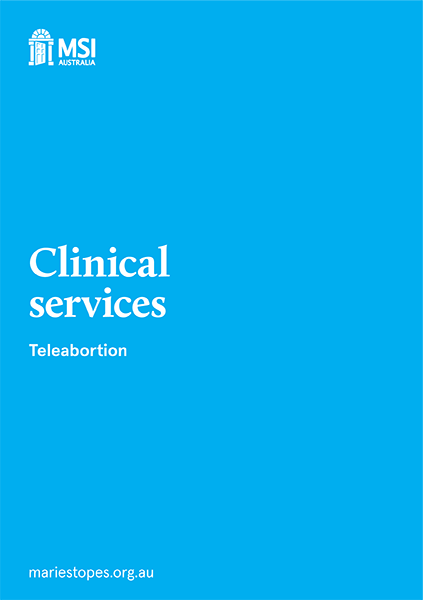
Clinical Services: Surgical
PDF versions available: Clinical Services: Surgical (ENG, PDF)
Ref code: 1707-MSIAU 240920
This booklet contains information about your surgical abortion. Read this information carefully and keep it to look at later on. Ask us if you have any questions after reading it.
Things to know
Consent
- It is important that you understand the process, any risks, and that you are sure about your choice.
- Risks of surgical abortion are described in the medical risks section.
- We will ask you to give your written consent to the process.
- It is important that you understand our fees and charges so you can give informed financial consent.
If you do not understand anything in this booklet, you have any questions, or if you feel that you’re being pressured or coerced, please let us know.
Interpreter services
Please let us know if you need a telephone interpreter to help you understand any of this information. If you need one at any time before
or after your procedure, you can call: TIS National on 131 450 and ask to be connected to us on 1300 207 382.
Accessibility statement
An accessible text version of this document is available online at msiaustralia.org.au
Make a complaint or provide feedback
If you would like to provide any feedback, you can:
- Talk to any staff member at the clinic
- Write directly to the clinic
- Call our National Contact Centre on 1300 003 707
- Use our feedback form on the homepage of our website: msiaustralia.org.au
If we don’t satisfy your concerns, you may also escalate your complaint to the independent body in your State.
What is a surgical abortion?
Surgical abortion (also known as surgical termination of pregnancy) is a simple, safe day-surgery procedure used to end a pregnancy. It is one of the most common surgical procedures in Australia.
While you are at the clinic
Expect to spend at least 4 hours at the clinic. Your stay may be longer depending on how many weeks pregnant you are.
You will have a consultation with both a nurse and a doctor.
The nurse will talk to you by yourself first. You will be asked about your decision and whether you are sure. Your support person is then allowed to join you in the consultation.
- We will ask about your medical history, previous pregnancies, and any operations you’ve had.
- We will explain the procedure and anaesthetic options as well as any risks.
- You can ask any questions you might have.
You will have an ultrasound to check how many weeks pregnant you are
- We will not show you the ultrasound unless you ask to see it.
We will discuss your contraceptive options and sexual health screening.
- These can take place at the same time as your procedure.
What happens during the procedure?
Depending on how many weeks pregnant you are, you may need extra steps before the procedure. We will give you more information if this is needed.
You will change into a gown before entering the procedure room.
- Your support person will not be able to be stay with you during the procedure. They may prefer to leave the clinic and return later.
- We will give you your chosen anaesthetic before the procedure starts.
- The doctor will then remove the pregnancy from the uterus using one of the methods listed.
- The procedure usually takes no more than 15 minutes.
If you are having IV sedation, it’s important you read the information in the Sedation Information Pack
Early pregnancy
- If your pregnancy is early a soft, thin tube is passed through the cervix (the opening of the womb) and into the uterus (womb).
- The pregnancy is removed using gentle suction.
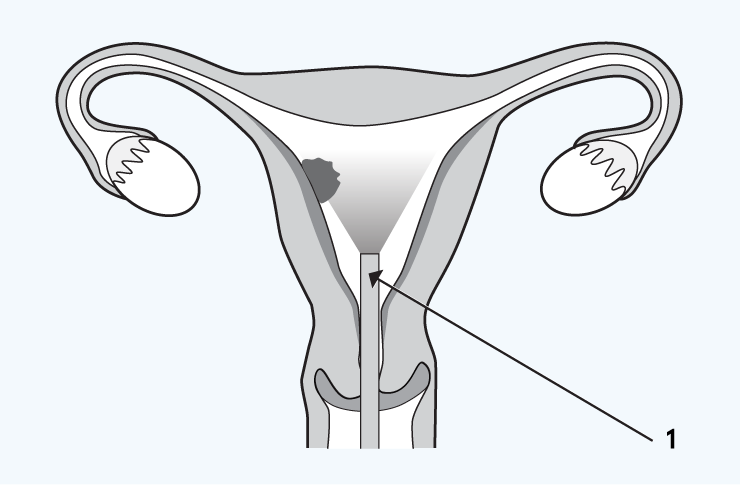
Illustration key:
- Pregnancy is removed with gentle suction.
Later pregnancy
- For later pregnancies, the opening of the cervix is gently stretched open using rods called dilators. The pregnancy is then removed using gentle suction or forceps (surgical tools).
At the end of the procedure, the doctor will check to make sure the procedure is complete.
Pain relief and antibiotic medicines are inserted into the back passage (through the anus) at the end of the procedure.
What happens after the procedure?
- You will spend a short time resting.
- Our recovery nurses will check on you regularly and check for any unusual pain or bleeding.
- Once you have recovered and are feeling well enough we will discharge you into the care of your support person (usually within 1 hour of your procedure).
Remember: If you have had IV sedation you cannot drive for 24 hours. You should also avoid alcohol, operating machinery and signing legal documents during this time.
For more information Please read the Sedation Information Pack.

What it means if you are Rhesus Negative
If you don’t know your blood type, we will test it during your consultation. If your blood group is a Rhesus Negative type and you are more than 10 weeks pregnant, you will be offered an injection of Anti-D.
Anti-D
Prevents Rhesus sensitisation and prevents problems with future pregnancies. We will give you more information if you’re Rhesus Negative.
Sexual health screening
Unless you ask not to, we will screen for sexually transmitted infections at the time of your procedure. You can also choose to have a Cervical Screening Test (previously known as a Pap smear) at the same time.
- These tests are free, but you will be charged if you have had a Cervical Screening Test in the past 5 years or do not have a Medicare card.
- We will only contact you for positive or abnormal test results.
- You can ask for a copy of your results to go to your GP.
After you leave the clinic
Your recovery is important. Make sure you look after yourself.
When you go home, you should relax for the rest of the day. As soon as you feel well enough, you can return to your normal activities and resume exercise.

Returning to work
Many people return to work 1 day after an early abortion, however, if you have a physically demanding job you may want to take a few days off.
If you have had IV sedation, please refer to the Sedation Information booklet for more information about what may impact your return to work.
If you and/or your support person need a medical certificate, remember to ask us on the day of your procedure.

Infection risk
To reduce the chances of infection, do not insert anything into your vagina for 1 week.
This includes tampons, menstrual/moon cups, fingers, or having vaginal intercourse.
If you want to use the vaginal ring or diaphragm for contraception, please discuss this with the doctor at your appointment.
What to expect after the procedure
Below are some things you may feel after your procedure, or you may not feel any. If you are worried about anything you are feeling please call the free aftercare line on 1300 888 022

Bleeding
Bleeding can be different for each person and may last up to 2 weeks. It can vary during this time.
- Bleeding is not normally heavy.
- You may pass some small blood clots.
- Some people may have no bleeding following their procedure – this can be normal too.
Call us if you experience any of the following:
- passing clots larger than golf balls
- bleeding heavier than a period for more than a few days
- soaking through a maxi-pad every 30 minutes for 2 hours or more.
Small amount (Small stain on maxipad within 1 hour)
Light amount (Less than 10cm stain on maxipad within 1 hour)
Average amount (Less than 15cm stain on maxipad within 1 hour)
Heavy amount (Saturated maxipad within 1 hour)

Abdominal pain
Some pain in your lower tummy is normal after your procedure. Pain and cramping should not be strong and should get better in a few days.
If you have pain in your lower tummy, there are some tips under the pain management section.
Call us: if pain is strong, does not go away, changes, or you are concerned.

Nausea
If you suffered from nausea (feeling sick) before your procedure, it may improve within 24 hours after the procedure.
Call us: if nausea stays more than 1 week after your procedure

Breast discomfort
Breast fullness or tenderness can last for 1 to 2 weeks. For some people, particularly those over 12 weeks’ gestation, your breasts may become fuller or leak a little fluid for a few days.
For relief:
- try wearing a support bra
- take medication like paracetamol (e.g. Panadol) or ibuprofen (e.g. Nurofen)
- do NOT squeeze or massage your breasts.
Call us: if your breasts are still sore after 2 weeks
Menstruation
You should get your first menstrual period 4 to 6 weeks after your procedure. Some contraceptive methods may affect this.
Call us: if your period has not come in this time

Emotional effects
Everyone has different feelings about their own procedure. There is no right or wrong way to feel after your abortion. If at any time you would like to talk to someone, we provide free counselling services.
Call us on 1300 003 707 to make a booking.
Pain management
If you have pain when you get home, you can use these pain management techniques.
Uterine massage
Frequent, firm massaging of your lower tummy area will help your uterus (womb) muscles, and can reduce bleeding and cramping. It can also help prevent blood clots.
- Lie on your back, sit on the toilet or in a comfortable position
- Feel at the top of your pubic bone, press down firmly and massage in a downwards direction with your hand.
- You can use your fingertips, knuckles or the heel of your hand.
- Do this massage hourly for 3 minutes at a time, on the day of your abortion
- Then 5 times a day, or until your cramping/bleeding has stopped.
- If you have discomfort during the massage, don’t stop the massage but take pain medication.
- One of our nurses will demonstrate the method to you prior to you leaving the centre.
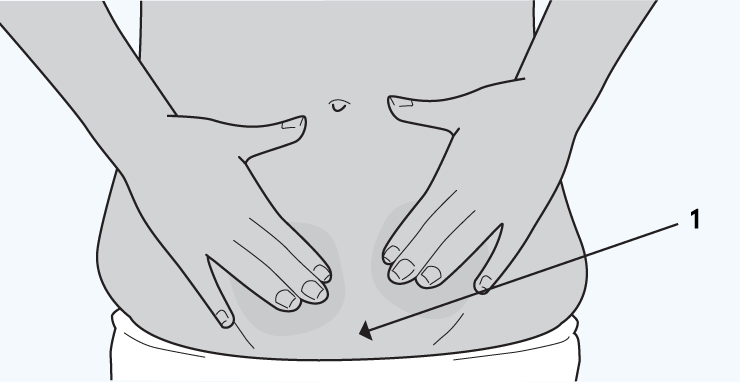
Illustration key:
- Pubic bone
Remember: If you have had intrauterine contraception (an IUD or IUS) inserted with your procedure, do not try uterine massage.
Heat therapy
You can put a hot water bottle, wheat bag or heat pack where the pain is.
- Do not apply heat directly to your skin.
- Always follow the product instructions.

Medication
- You can take pain relief, such as paracetamol (e.g. Panadol) or ibuprofen (e.g. Nurofen).
- Follow the directions on the packaging and do not take more than instructed.

Possible signs of infection
These symptoms are not common and could mean you have an infection:
- Fever
- Feeling tired, rundown or flu-like symptoms
- Feeling generally unwell or flu-like symptoms
- ongoing abdominal (lower tummy) pain
- Unusual vaginal discharge.
Call us: if you experience any of these symptoms.
Surgical risk
Surgical abortion is a very safe procedure; however, all surgical procedures have some risks.
The risks mentioned below do not include all possible complications, but are the more common or important complications.
If you are having surgery under IV sedation, make sure you read our Sedation information pack.
For more information on risks, please see our website for the recent complication rates from our clinics.

Retained pregnancy tissue or clot
Approximately 1-2 in 100
What is it: A small amount of tissue may stay in the uterus, or blood may collect and form a clot. This can cause excessive bleeding and/or pain.
Action/treatment: May require treatment or a repeat procedure. You will not have to pay for this if treated in one of our clinics.
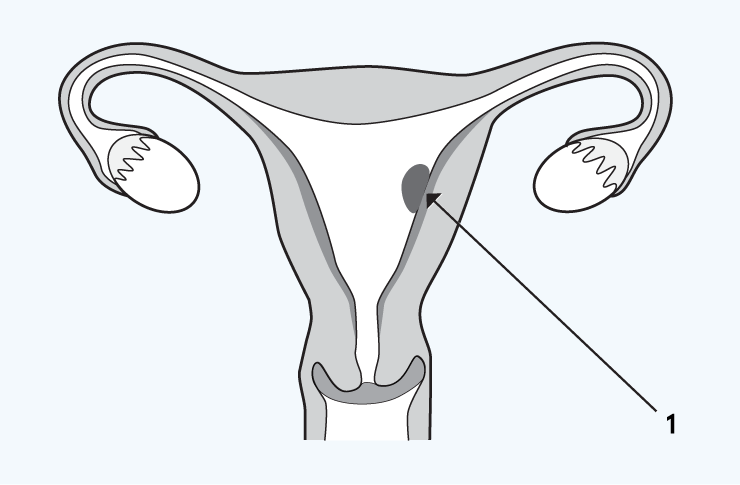
Illustration key:
- Retained clot or pregnancy

Continuing pregnancy
Around 1 in 500 procedures
What is it: The pregnancy remains and may continue to grow. This is more likely in procedures done very early in pregnancy.
Action/treatment: May require treatment or a repeat procedure. You will not have to pay for this if treated in one of our clinics.
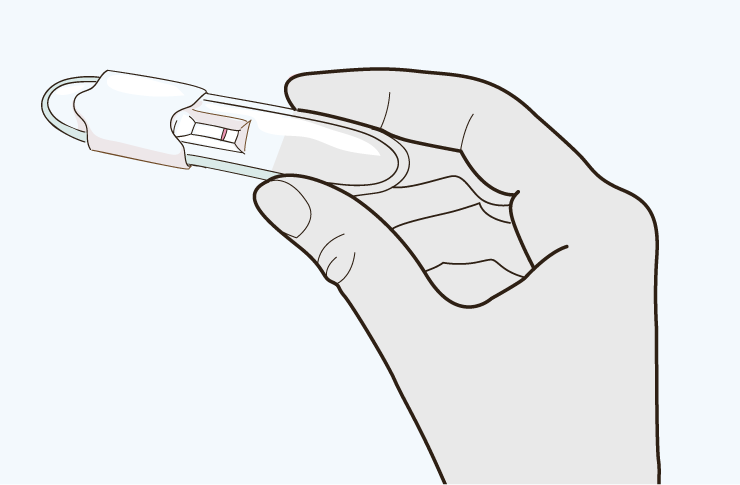
Illustration:
Continuing pregnancy

Infection
Because we screen for infection and provide antibiotics, the risk is less than 1 in 100.
What is it: When bacteria or a virus enters the body and can cause disease. This is uncommon and serious infection from abortion is rare.
Action/treatment: You will be tested for infections and we will give you antibiotics to reduce the risk of infection.

Illustration
Infection

Cervical trauma
About 1 in 100 procedures; risk is higher with later pregnancy.
What is it: Damage or tearing of the cervix (lower part of the womb).
Action/treatment: You may be given medication before the procedure to reduce this risk.
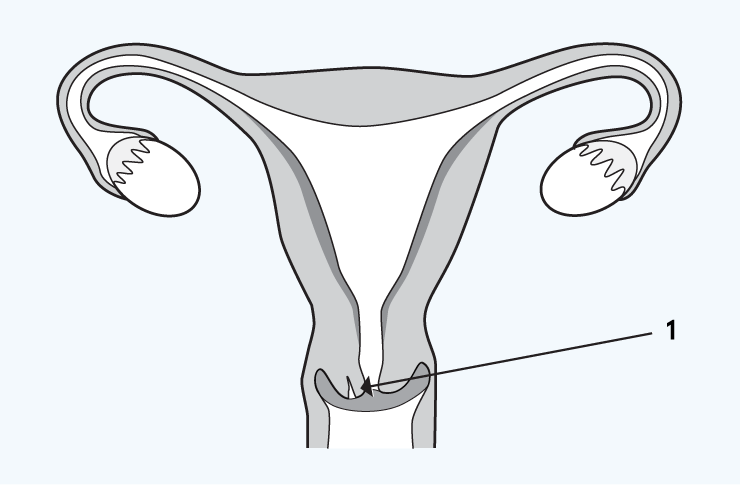
Illustration
- Damage or tearing of the cervix

Haemorrhage
Less than 1 in 1,000 cases; risk is higher with later pregnancy.
What is it: Excessive bleeding.
Action/treatment: You may need further surgery, intravenous fluids or a blood transfusion.

Illustration:
Haemorrhage

Perforation of the uterus
1 in 1,000 procedures; risk is higher with later pregnancy.
What is it: The tools used during the procedure make a small hole in the wall of the uterus.
Action/treatment: This usually heals by itself without treatment. If we are concerned about possible injury to your bowel or to blood vessels, we will transfer you to a hospital for further assessment. In some cases, you might need surgery. In rare cases, you will have to have your uterus removed.
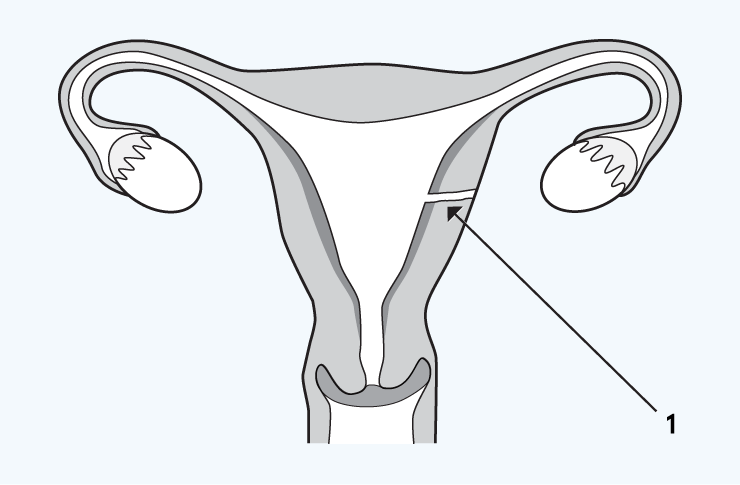
Illustration key:
- Perforation of the uterus
Effect on future pregnancies
An uncomplicated abortion will not affect your chance of becoming pregnant in the future.
There is a small increase in the risk of a future pre-term birth (more than 3 weeks earlier than the due date), compared to if you have not had an abortion.
To help manage this risk we may give you medication before the procedure to reduce this risk further.
Contraception and aftercare
We will give you information about your contraception options.
Contraception options
Within just 2 weeks of your treatment, your body can release an egg; so it’s possible to fall pregnant again before your next period. This is why we strongly suggest starting contraception as soon as possible if you don’t want to become pregnant. Please take the time to look at our contraception brochure.
Ask your doctor or nurse for fact sheets on any of the contraceptive methods you are interested in.
You can take an online contraception quiz at contraception.org.au
Contraception during your appointment
We can easily give you a long acting reversible contraceptive (LARC) method at your appointment – so you don’t need to worry about making another appointment.
LARC options (e.g. IUDs, implants, injections) are the most effective at preventing pregnancy.
We can provide a prescription for other hormonal contraception options such as the contraceptive pill or vaginal ring.
You can start contraception such as the pill or ring the day after your procedure and it will be effective immediately.
No matter which contraception you using, you should not have vaginal intercourse for 1 week after your treatment.
Hormonal IUD
Implant
Copper IUD
Injection
Our aftercare phone service connects you to experienced registered nurses, 8am-5pm AEST weekdays.
Free aftercare
Call our aftercare nurses on 1300 888 022 if you experience any of the following problems or have any concerns:
- passing clots larger than golf balls
- bleeding heavier than your period for more than a few days
- soaking through a maxi-pad every 30 minutes for 2 hours or more
- having strong abdominal pain that doesn’t stop
- nauseous more than 1 week after your procedure
- fever, feeling tired or feeling generally unwell
- having sore breasts for 2 weeks after your procedure
- not menstruating as usual, 4-6 weeks after your procedure.
Call us IMMEDIATELY if you have possible signs of an infection:
- fever
- feeling generally unwell (flu like symptoms)
- ongoing abdominal pain
- unusual vaginal discharge.
Care and support before, during and after your procedure
Interpreter: Call 131 450 and ask to be connected to MSI Australia on 1300 003 707
Aftercare: 1300 888 022
Your Healthcare Rights
MSI Australia adopts the Australian Charter of Healthcare Rights. The Charter provides a framework of client rights which allows clients, families, carers and services providing health care to work together towards a safe and high quality health system, achieving the best possible outcomes.
The Charter is guided by the following principles:
- Access
- Safety
- Respect
- Partnership
- Information
- Privacy
- Give feedback
As a client of MSI Australia, you have a right to:
- be treated in a professional, courteous, and caring manner
- be respected regardless of your gender, age, sexual orientation, disability, religion, and cultural and linguistic diversity
- have your concerns, complaints and suggestions taken seriously.
If we don't satisfy your concerns, you may also escalate your complaint to the independent body in your State/Territory.
More information about your healthcare rights and the Australian Charter of Healthcare Rights is available on safetyandquality.gov.au. An accessible version of the Charter is also available.
This page last edited: September 2024
Ref: 1707-MSIAU 240920
